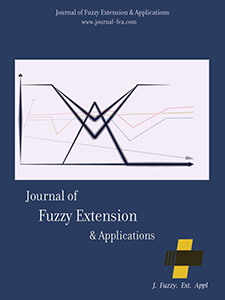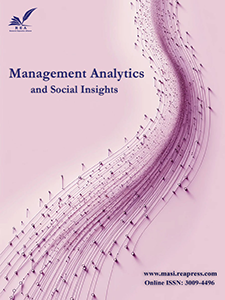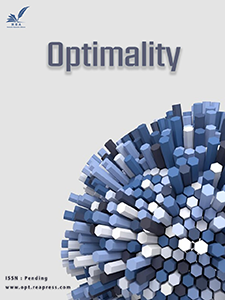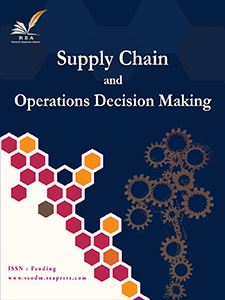Mitigating Human Error in Oil and Gas Accidents Using TRACEr-OGI: A Middle Eastern Case Study
Keywords:
Accident investigation, Cognitive error, Psychological error, Internal error, External errorAbstract
Persistent human error remains a significant contributor to Middle Eastern oil and gas accidents despite ongoing efforts to analyze and mitigate these risks. This study investigates the applicability of the Technique for Retrospective and Predictive Analysis of Cognitive Error (TRACEr-OGI) for analyzing human error in offshore/onshore drilling accidents. Data from 16 accidents between 2000 and 2014 were obtained from the IOGP safety zone and analyzed using TRACEr-OGI. A total of 1131 errors associated with the accidents were coded. The analysis revealed operator context (55.26%) as the most prevalent error source, followed by task errors (51.93%) within the context of incidence. It suggests a need for interventions targeting operator decision-making processes during drilling operations. Interestingly, both internal (33.66%) and external (33.17%) error modes were highly prevalent within the operator context. It indicates operators' susceptibility to errors arising from both internal cognitive factors and external influences on their decision-making. Additionally, the analysis identified personnel and management factors (23.41%) and Psychological Error Modes (PEM) (19.27%) as significant contributors to accidents. These findings suggest a multi-faceted approach is necessary to mitigate human error in Middle Eastern drilling operations. This study highlights the importance of considering operator cognitive factors and broader personnel and management practices that can influence psychological well-being. The oil and gas industry can significantly enhance safety in drilling operations across the Middle East by addressing these factors.
References
[1] Stevens, P. (2018). The role of oil and gas in the economic development of the global economy. Extractive industries, 71, 71–90. DOI:10.1093/oso/9780198817369.003.0004
[2] Hollnagel, E., Pruchnicki, S., Woltjer, R., & Etcher, S. (2008). A functional resonance accident analysis of comair flight 5191. Proceedings of the 8th international symposium of the australian aviation psychology association (pp. 8--pages). https://www.diva-portal.org/smash/record.jsf?pid=diva2:263974
[3] Alkhaldi, M., Pathirage, C., & Kulatunga, U. (2017). The role of human error in accidents within oil and gas industry in bahrain. Paper presented at the 13th international postgraduate research conference (ipgrc). University of Salford, UK (pp 12-18). https://salford-repository.worktribe.com/output/1387123
[4] Nwankwo, C. D., Arewa, A. O., Theophilus, S. C., & Esenowo, V. N. (2022). Analysis of accidents caused by human factors in the oil and gas industry using the HFACS-OGI framework. International journal of occupational safety and ergonomics, 28(3), 1642–1654.
[5] Reason, J. (1997). Managing the risks of organizational accidents. Ashgate, UK. https://doi.org/10.1080/10803548.2021.1916238
[6] Kirwan, B. (1997). Validation of human reliability assessment techniques: Part 2—Validation results. Safety science, 27(1), 43–75.
[7] Kirwan, B. (1997). Validation of human reliability assessment techniques: part 1—validation issues. Safety science, 27(1), 25–41.
[8] Baysari, M. T., Caponecchia, C., & McIntosh, A. S. (2011). A reliability and usability study of TRACEr-RAV: The technique for the retrospective analysis of cognitive errors - For rail, Australian version. Applied ergonomics, 42(6), 852–859. DOI:10.1016/j.apergo.2011.01.009
[9] Machan, T. R. (2016). On economic individualism. Psychosociological issues in human resource management, 4(2), 145–184. https://www.ceeol.com/search/article-detail?id=455144
[10] Huang, L., Wu, C., Wang, B., & Ouyang, Q. (2018). A new paradigm for accident investigation and analysis in the era of big data. Process safety progress, 37(1), 42–48. https://aiche.onlinelibrary.wiley.com/doi/abs/10.1002/prs.11898
[11] Sklet, S. (2004). Comparison of some selected methods for accident investigation. Journal of hazardous materials, 111(1–3), 29–37. https://www.sciencedirect.com/science/article/pii/S0304389404000834
[12] IOGP. (2015). https://safetyzone.iogp.org/fatalincidents/fatalincidents.asp
[13] Shorrock, S. T., & Kirwan, B. (2002). Development and application of a human error identification tool for air traffic control. Applied ergonomics, 33(4), 319–336. https://www.sciencedirect.com/science/article/pii/S0003687002000108
[14] Graziano, A., Teixeira, A. P., & Guedes Soares, C. (2016). Classification of human errors in grounding and collision accidents using the TRACEr taxonomy. Safety science, 86, 245–257. DOI:10.1016/j.ssci.2016.02.026
[15] Shorrock, S. T. (2002). Error classification for safety management: Finding the right approach. Proceedings of a workshop on the investigation and reporting of incidents and accidents, 17th to 20th july (pp. 57–67). https://www.academia.edu/download/4141880/395.pdf#page=57
[16] Caponecchia, C., Baysari, M. T., & McIntosh, A. S. (2012). Development, use and usability of TRACEr-RAV (technique for retrospective analysis of cognitive errors for rail, Australian version. Rail human factors around the world: impacts on and of people for successful rail operations, 85, 85–93. DOI:10.1201/b12742-12
[17] Gibson, W. H., Mills, A., & Hesketh, S. (2012). The classification and analysis of railway incident reports (Vol. 11). CRC Press Boca Raton, FL, USA.
[18] Board, R. S. and S. (2005). Rail-specific human reliability assessment technique for driving tasks (T270). Rail safety and standards board (rssb), london, uk, 4p. https://trid.trb.org/View/849754
[19] Isaac, A., Shorrock, S. T., Kennedy, R., Kirwan, B., Andersen, H. B., & Bove, T. (2003). Technical review of human performance models and taxonomies of human error in ATM (HERA). Thomas Bove. https://orbit.dtu.dk/en/publications/technical-review-of-human-performance-models-and-taxonomies-of-hu





